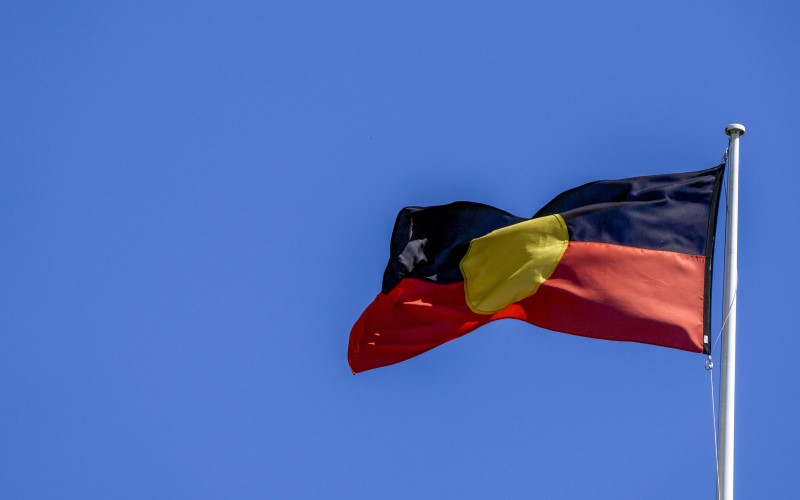
An ear condition that overwhelming affects Indigenous children can lead to social disadvantage. Yet it can be fixed with simple measures. So why doesn’t the government act?
One of the most serious issues affecting Aboriginal children — and least known about — is deafness. It is not mentioned in the old or the new Closing the Gap issues, but it resonates deeply into the lives of Aboriginal people.
The recent Royal Commission into the Protection and Detention of Children in the Northern Territory revealed that 91 per cent of the inmates were functionally deaf. This situation is echoed in prisons across the country.
Aboriginal children suffer from otitis media — glue ear — much more than other Australian children and more than any other children in the world. The incidence ranges from 33 to more than 90 per cent. The World Health Organization says anything more than 4 per cent is a “health emergency”.
When children are afflicted by otitis media it must be cured before they are about 12, otherwise it is a life sentence.
A pessimistic, but all too common, view of an Aboriginal child’s life journey can run like this: untreated otitis media as a child leading to little interest in school attendance, trouble obtaining a job, persistence of chronic ill health with multiple co-morbidities, mischief or more serious encounters with the law and the prospect of early death.
Uncle Bob Mumbler, ex-chair of the Dunghutti Elders Corp in Kempsey, recently told me: “I was walking down the main street in Kempsey when I saw a group of Aboriginal kids having an ordinary conversation, but they were yelling at each other. As I came closer, I realised they were all deaf.”
The overall social cost can be as much as $7 million for each person when things such as prison, dialysis, diabetes, government benefits and so on, are factored in.
So, if a child and their family can be encouraged to persist with education, a continuum of optimistic opportunities can emerge. One end of that continuum could be the benefits of good health and confident self-image. An even more ambitious journey could include the goal of being trained to be a professional such as a doctor. That investment could give a return to society of more than $3 million.
A familiar response from health authorities representing the federal government has been simply to recommend ear surgery for a very few — shutting the stable door too late and failing to address the raft of problems that created the need for such an expensive clinical response.
Paul Higginbotham, CEO of the WA Hearing Bus Foundation insists: “The best response is addressing the social determinants, clinical programs, awareness and prevention.” He is also critical of “endless, sometimes pointless research that so often gets funded rather than research that validates effectiveness”.
It is widely known that preventative measures are essential and effective. Empowering children to look after their own ear health is not hard. Learning about simple hygiene — blowing your nose, wiping your face, eating a good diet, things so simple that it escapes government comprehension.
This is not child’s play. It is deadly serious. So, what hope do the children have?
The significance of an inclusive, grounded and simple response conceived by understanding the complexity of the issue is essential. At least one organisation, The Malpa Project, is responding. Malpa uses the traditional way of delivering health which involves training children aged nine to 12 to be Young Doctors, health ambassadors in their community. They are raised to bring healing to their people.
There are more than 2500 Young Doctors across Australia. Aboriginal kids and their non-Aboriginal peers who learn about hygiene, leadership, nutrition, social and emotional wellbeing, health literacy, environmental health and more.
The Young Doctors learn from anyone who knows things they want to know, including doctors, paramedics, dentists and elders. The projects are supported by the Australian Indigenous Doctors Association and the Australasian College for Emergency Medicine who see this as creating career pathways.
Paying attention to the wisdom and knowledge of Indigenous elders and seeking their advice gives a real authenticity to The Malpa Project. This is grassroots empowerment.
Poor hearing health is not confined to remote communities. In one location where Malpa works in outer Melbourne, about 45 per cent of the children have hearing aids and classes are conducted with the teacher using a microphone linked to a bank of loudspeakers. The other children in the class wear earmuffs to dampen the noise and protect their hearing. This is a stopgap response, at best.
Malpa’s Young Doctors share their new-found knowledge in their community. The results are profound, but this is no surprise to the elders. “When you do it Aboriginal way then it will work,” according to Wiradjuri elder “Riverbank” Frank Doolan.
The hands-on, community devised and delivered Malpa projects build the capacity of communities and the confidence of young people and but challenge the conclusion of a respected elder who observed that “the government’s plan is not to have a plan.”
Glue ear for Aboriginal children is the missing piece in the jigsaw puzzle of Aboriginal disadvantage. So many other issues tumbled out of this single issue.
So why are governments so deaf to this problem? Only they can answer that.




